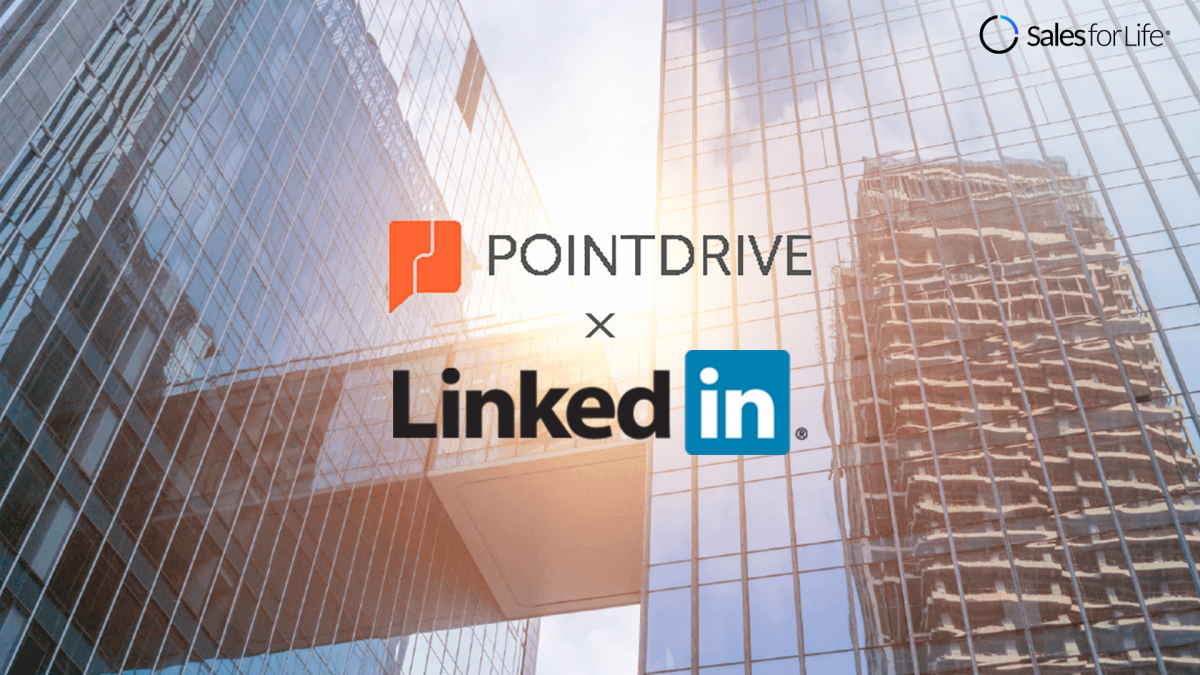If you were to ask the average sales leader and professional why they use LinkedIn Sales Navigator, most would say they like the advanced functions, account management, and being able to socially surround their customers. But they—and you—may not realize you also have a free and available license for an extremely valuable tool called LinkedIn Point Drive.
LinkedIn Point Drive is a media-rich communicator with two major value propositions:
1. It allows you to track buying intent.
2. It allows you to back the buying committee.
There are very few tools in the world that give this power to the sales professional. With LinkedIn Point Drive, sales pros can identify who’s interested, who’s not, and indicate which people in an organization they should get to know.
Here are four use cases in which you can consider using LinkedIn Point Drive:
1. TAM -Total Addressable Market (Mapping a Market)
Inside sales pros (BDRs, SDRs, and LDRs) use LinkedIn Point Drive at the top of the funnel. They might be targeting a certain industry or an entire geographic region. But even if they’ve been assigned lists or named accounts, or have inbound leads from marketing, in reality they often don’t have any direction on which accounts they should prioritize, or which accounts have buying high intent.
This is where LinkedIn Point Drive comes in. The inside sales pros will build sales plays that teach new market best practices, introduce new product ideas, or talk about a new upcoming event. They then use LinkedIn Point Drive to send this out to hundreds of marketers, and, monitoring the insights they get from LinkedIn Point Drive, they can determine which accounts are watching and consuming so they can stack rank which accounts to target.
2. Qualify Account Priorities
When an account executive finishes a discovery call, they often wrap up the call with the key stakeholder expressing interest, and requesting further information that they can share with their team to get traction on the idea.
The next 48 hours are critical. You want to know how serious this buyer is. They are your champion—how serious are they? Will they go to bat for you?
LinkedIn Point Drive can be invaluable in this case. You can create a LinkedIn Point Drive that summarizes everything you’ve learned, and upload all the requested information there. You talk openly about this on the discovery call, and say that you’re going to share the information they have requested so they can have their internal conversations via LinkedIn Point Drive.
Watch the next 48 hours. If those champions actually go to the drive you’ve set up, and share with their team, you know you’ve got a champion who wants to make change. But if they don’t open up that point drive for weeks, you’ll get a sense of where your solution sits in their priority stack.
3. Overcoming the Dead Zone
An old marketing adage states that companies go through three stages: awareness, consideration, and decision. But the reality is people don’t go through those stages. In reality, people are trying to absorb your information—and often have learning challenges with it.
There are three common learning challenges that come up when people are deciding whether to go with your solution:
a) Those who are happy with the status quo;
b) Those who are struggling to understand how what you do correlates to value; and
c) Those who feel your solution is so easy that they can do it themselves. These people are thinking, why do I need you?
For those who are stuck on status quo or struggling to understand the value of your solution, you can build linear process maps – which we like to call the “yellow brick road,” to show in a clear and linear way how you can help them.
You can also build more complex learning paths for those who think it’s easy, which we call the “mental pretzel.” These learning paths help them understand that one decision they make can have a cascading effect, which can affect 5-10 other things that are much more macro. It also reminds them that if they don’t take it seriously, they’re just checking a box and it has consequences.
You can use LinkedIn Point Drive to nurture these buyers and to discover who else would be interested in the information you’re sharing.
4. Key Stakeholder Approval
Here at Sales For Life, all statements of work and proposals are placed in the LinkedIn Point Drive. Why? We want to ensure that key stakeholders consume the right information.
For most deals, we know the deal will be signed by the CFO or negotiated by Procurement, and then reviewed by Legal. And if our information hasn’t made its way into all of their hands, we know the deal has stalled.
I’ve heard a million stories of people saying “Yes, we’re reviewing your proposals,” “Yes, we’re reviewing your contract,” when this is not true.
So we use LinkedIn Point Drive to validate that information, and help us understand if our key stakeholders are taking the proper steps to move those deals forward.









